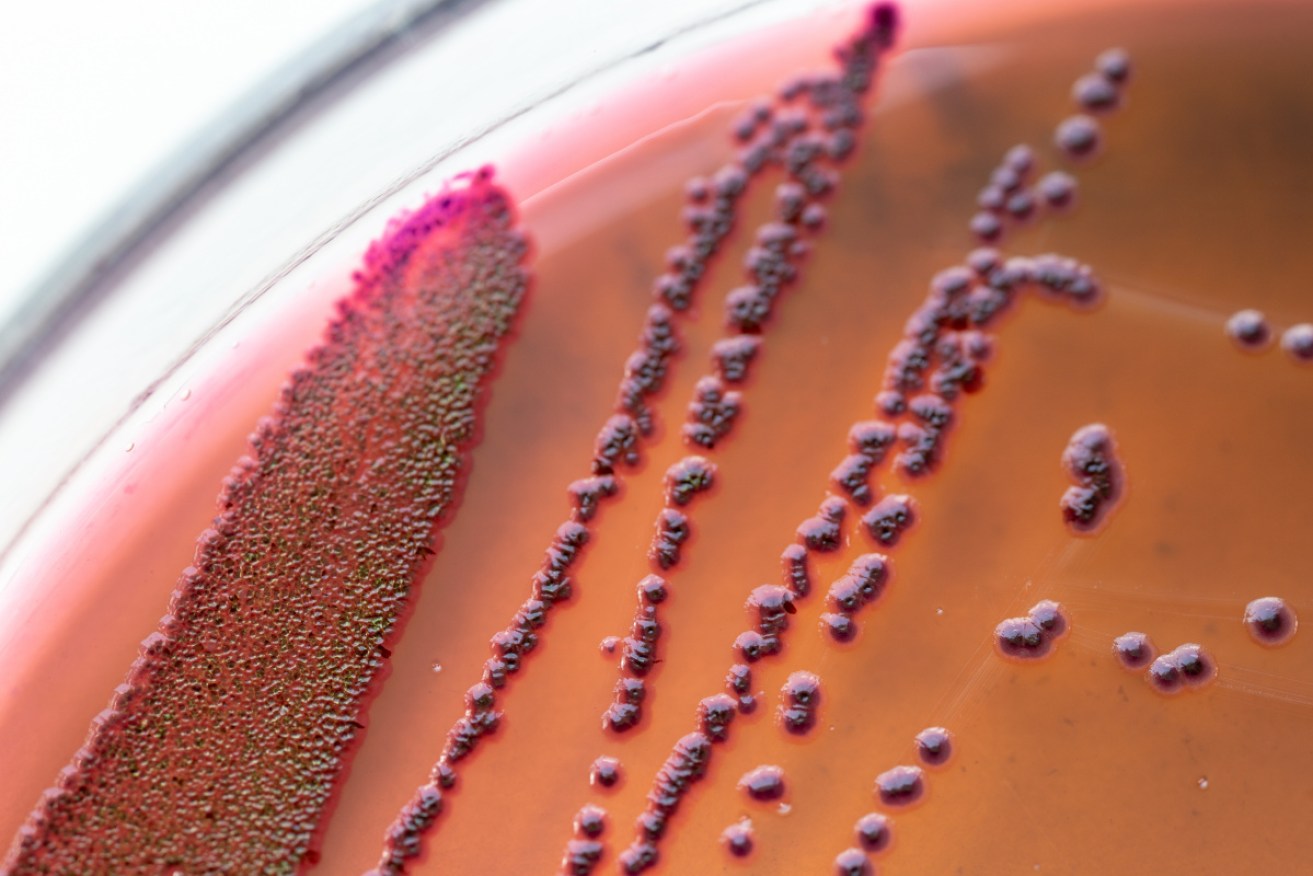Just in time to save the world? ‘One of the more powerful antibiotics that has been discovered’


In the study, E. coli did not develop any resistance to the new drug halicin during a 30-day treatment period. Photo: Getty
Have killer superbugs met their kryptonite?
A machine-learning algorithm has identified a new antibiotic compound that kills strains of bacteria that are resistant to all known antibiotics.
And it does so in a way that bacteria may find impossible to develop resistance to – hence solving one of the biggest public health problems of the 21st century.
The AI computer model, developed by researchers at the Massachusetts Institute of Technology, can screen more than 100 million chemical compounds in a matter of days – and is programmed to pick out potential antibiotics that kill bacteria using different mechanisms than those of existing drugs.
Several potential compounds were discovered, but one in particular has proved to be a powerful bug killer.
The scientists have named the molecule “halicin”, in honour of HAL, the spooky AI system from 2001: A Space Odyssey.
One of the researchers has described the “amazing” molecule as “arguably one of the more powerful antibiotics that has been discovered”.
Scientists tend not to say ‘like, ever’, but that is the gist of his enthusiasm.
Most of the tests were conducted in petri dishes.
However, to test the molecule’s effectiveness in animals, mice were exposed to an uber-resistant strain of Acinetobacter baumannii.

Halicin (top row) prevented the development of antibiotic resistance in E. coli, while ciprofloxacin (bottom row) did not. Photo: The Collins Lab at MIT
This bacterium has afflicted many US soldiers stationed in Iraq and Afghanistan, in some cases causing serious infections in the lungs, blood, and brain.
An application of the new compound completely cleared the infections within 24 hours.
Some rare good news
This is good news in a research space that has almost stalled.
As The New Daily recently reported, Big Pharma companies have abandoned the expensive pursuit of developing new strains of antibiotics – because there is no money in it – leaving the global population at the mercy of previously treatable diseases.
The World Health Organisation, when raising the flag on the issue, noted a lack of much-needed innovation in the small number of new strains of antibiotics under development.
The MIT research is innovative in that the compound halicin, which was previously trialled as a diabetic drug, appears to kill bacteria in a novel way.
It apparently disrupts the bug’s ability to maintain what’s known as an electrochemical gradient across their cell membranes.
This gradient is necessary, among other functions, to produce Adenosine triphosphate (ATP) – molecules that cells use to store energy. When the gradient breaks down, the cells die.
The researchers suggest that this type of killing mechanism could be difficult for bacteria to develop resistance to, which is a tantalising prospect.

MIT Professor of Bioengineering James Collins led the research. Photo: M. Scott Brauer
“We wanted to develop a platform that would allow us to harness the power of artificial intelligence to usher in a new age of antibiotic drug discovery,” said Dr James Collins, an MIT professor of medical engineering, in a prepared statement.
Our approach revealed this amazing molecule, which is arguably one of the more powerful antibiotics that has been discovered.’’
Finding the right AI model
Dr Collins said there is a “growing crisis around antibiotic resistance, and this situation is being generated by both an increasing number of pathogens becoming resistant to existing antibiotics, and an anaemic pipeline in the biotech and pharmaceutical industries for new antibiotics.”
According to a statement from MIT, the researchers designed their machine-learning algorithm to look for chemical features that make molecules effective at killing E. coli.
To do so, they trained the model on about 2500 molecules, including about 1700 FDA-approved drugs and a set of 800 natural products.
Once the model was trained, the researchers tested it on the Broad Institute’s Drug Repurposing Hub, a library of about 6000 compounds that was the subject of a previous report about new cancer drugs from The New Daily.
The model picked out the molecule now known as halicin that was predicted to have strong antibacterial activity and had a chemical structure different from any existing antibiotics.
Using a different machine-learning model, the researchers also showed this molecule would likely have low toxicity to human cells.
The researchers tested halicin against dozens of bacterial strains isolated from patients and grown in lab dishes, and found that it was able to kill many that are resistant to treatment, including a multi-drug resistant form of tuberculosis, and pathogens that routinely plague hospital settings.
In this study, the researchers found that E. coli did not develop any resistance to halicin during a 30-day treatment period.
In contrast, the bacteria started to develop resistance to the antibiotic ciprofloxacin within one to three days, and after 30 days, the bacteria were about 200 times more resistant to ciprofloxacin than they were at the beginning of the experiment.
The researchers plan to pursue further studies of halicin, working with a pharmaceutical company or non-profit organisation, in hopes of developing it for use in humans.








